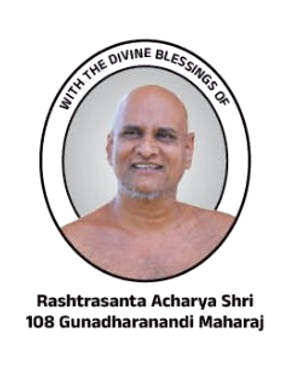
S.D.M. Jainmatt Trust (R)
A.G.M. Homoeopathic Medical College & Hospital
Shri Navagrha Teerth Kshetra, N.H-4 Road, VARUR.581207.
Tq : Hubballi Dist. Dharwad, Karnataka


Shri Navagrha Teerth Kshetra, N.H-4 Road, VARUR.581207.
Tq : Hubballi Dist. Dharwad, Karnataka


Shri Navagrha Teerth Kshetra, N.H-4 Road, VARUR-CHABBI.581207.
Tq : Hubballi Dist. Dharwad, Karnataka

| Course Name | Description | |
|---|---|---|
| Anatomy | 1 | Identify, recognize, locate, and describe normal morphological structures of human body with its topography. |
| 2 | Identify and correlate anatomical basics of clinical, applied and Radiological Anatomy according to regional distribution. | |
| 3 | Establish correlation in the knowledge of regional Anatomy with general Anatomy, embryology and Histology. | |
| 4 | To integrate the knowledge of Anatomy with Physiology. | |
| Physiology Including Biochemistry | 1 | Describe the fundamental Homoeostatic mechanisms underlying normal function of cells, tissues, organs, and organ systems in humans. |
| 2 | Describe Physiological aspects of normal growth and development and Physiological response and adaptations to environmental stresses. | |
| 3 | Molecular and functional organisation of a cell and molecular concepts of body defence | |
| 4 | To integrate the knowledge of physiology & biochemistry with anatomy. | |
| 5 | Application of homoeopathic knowledge in the Physiology & Biochemistry in co-ordination to basic subjects of Homoeopathic Medicine. | |
| Homoeopathic Pharmacy | 1 | Understand the basic principles of Homoeopathic Pharmacy and student will be able to describe the evolution of Homoeopathic Pharmacy and its future plans. |
| 2 | Understand the scientifical and logical basis of principles and practice of dynamization. Understand the technique of drug proving. | |
| 3 | Student will understand the methods of quality testing, storing and dispensing of Homoeopathic medicines. | |
| 4 | Demonstrate knowledge about the laws related to pharmaceutical industry and Homoeopathy in particular. | |
| Organon of Medicine | 1 | To Focus on Logic and Understanding that Homoeopathy is the high water mark of the inductive Philosophy. To apply Inductive and deductive logic to the understanding of the Fundamentals of Homoeopathy. |
| 2 | To Lay emphasis on the mind study and thereby the behaviour of the person to focus on Individualisation and thereby the conceptual base . | |
| 3 | The teaching of Homoeopathy to be based on complete system of the Medicine with the logical rationality of its Holistic , Individualistic and dynamistic approach to life, health , Disease remedy and cure. | |
| 4 | To upgrade students in the Homoeopathic prophylaxis, to help them to contribute in the Epidemics and pandemic diseases and thereby prevent the sufferings in the disaster. | |
| Materia Medica 1st Year | 1 | Define the terms ‘Materia Medica’ & ‘Homoeopathic Materia Medica’ |
| 2 | Enumerate the sources of Homoeopathic Materia Medica. | |
| 3 | Describe the basic concept for construction of various Materia Medica | |
| 4 | Explain the construction of Homoeopathic Materia Medica. | |
| 5 | List the types of Homoeopathic Materia Medica. | |
| 6 | Classify Homoeopathic Materia Medica | |
| 7 | Discuss the scope & limitations of Homoeopathic Materia Medica. | |
| Materia Medica 2nd Year | 1 | Describe the Science & Philosophy of Homoeopathic Materia Medica |
| 2 | List different ways of studying Homoeopathic Materia Medica | |
| 3 | List the scope & limitations of Homoeopathic Materia Medica | |
| 4 | Recall the remedy relationship of various drugs | |
| 5 | Compare & contrast the drugs listed below | |
| 6 | Describe the theory, history, concept & principles of Biochemic System of Medicine | |
| 7 | Recall the drug pictures of the medicines listed in Appendix – I | |
| Pathology & Microbiology | 1 | Describe the structure and ultra structure of a diseased cell, mechanisms of cell degeneration, cell death and repair. |
| 2 | Explain the Pathophysiological process that governs the maintenane of Homoeostasis, mechanisms of their disturbance and the morphological and clinical manifestations associated with it. | |
| 3 | Describe the mechanism and patterns of tissue response to injury such that he/she can appreaciate the Pathophysiology of disease processes and their clinical manifestations in relation to Homoeopathic concept of miasms and morbidity. | |
| 4 | State the micro -organisms of human body and describe the host-parasite relationship. | |
| 5 | State or indicate the modes of transmission of Pathogenic and opportunistic organisms and their sources including insect vectors. | |
| 6 | Apply methods of disinfection and sterilization to control and prevent hospital and community acquired infections. Advice laboratory investigations and interpret the same for curative and prophylactic purposes. | |
| Forencic Medicine & Toxicology | 1 | Identify, examine and prepare report or certificate in medico-legal cases/situations in accordance with the law |
| 2 | Demonstrate awareness of inquest, legal and court procedures applicable to medico-legal and medical practice | |
| 3 | Understand the medico-legal post-mortem examination and interpret autopsy findings and results of other relevant investigations to logically conclude the cause, manner and time since death | |
| 4 | Be conversant with medical ethics, etiquette, duties, rights, medical negligence and legal responsibilities of the physicians towards patients, profession, society, state and humanity at large | |
| 5 | Be aware of relevant legal/court procedures applicable to the medico legal/medical practice | |
| 6 | Preserve and dispatch specimens in medico-legal/post-mortem cases and other concerned materials to the appropriate Government agencies for necessary examination | |
| 7 | Manage medico-legal implications, diagnosis and principles of therapy of common poisons | |
| 8 | Be aware of general principles of environmental, occupational and preventive aspects of toxicology | |
| 9 | Demonstrate basic knowledge of relevant sections of penal code. | |
| 10 | Describe the medico legal framework in our country so as to relate the duties and responsibilities of homoeopathic practitioner in this context | |
| Gynaecology & Obstetrics | 1 | Connect the knowledge of anatomy and physiology in relation to the female reproductive system. |
| 2 | Relate the pathology with the disorders of the genitourinary system in females. | |
| 3 | Understand the difference between physiological and pathological changes during puberty, menopause, pregnancy, labour and puerperium. | |
| 4 | Implement the knowledge of Materia Medica in the application of therapeutics for the topics covered so far. | |
| Surgery, ENT, Opthalmology, Dentistry & Homoeopathic Therapeutics | 1 | Describe the principles of diagnosis and management of General surgical, Systemic surgical, and Orthopaedic conditions in adults and children. |
| 2 | Diagnose and manage common disease conditions of Eye, Ear, Nose, Throat, and Dentristry. | |
| 3 | Perform relevant surgical examinations clinical test, and diagnose various radiological changes in common surgical diseases. | |
| 4 | Perform common surgical procedures at the primary care level | |
| 5 | Explain the role of homoeopathy in the management of common surgical, non-surgical conditions and palliative therapy in incurable conditions. |